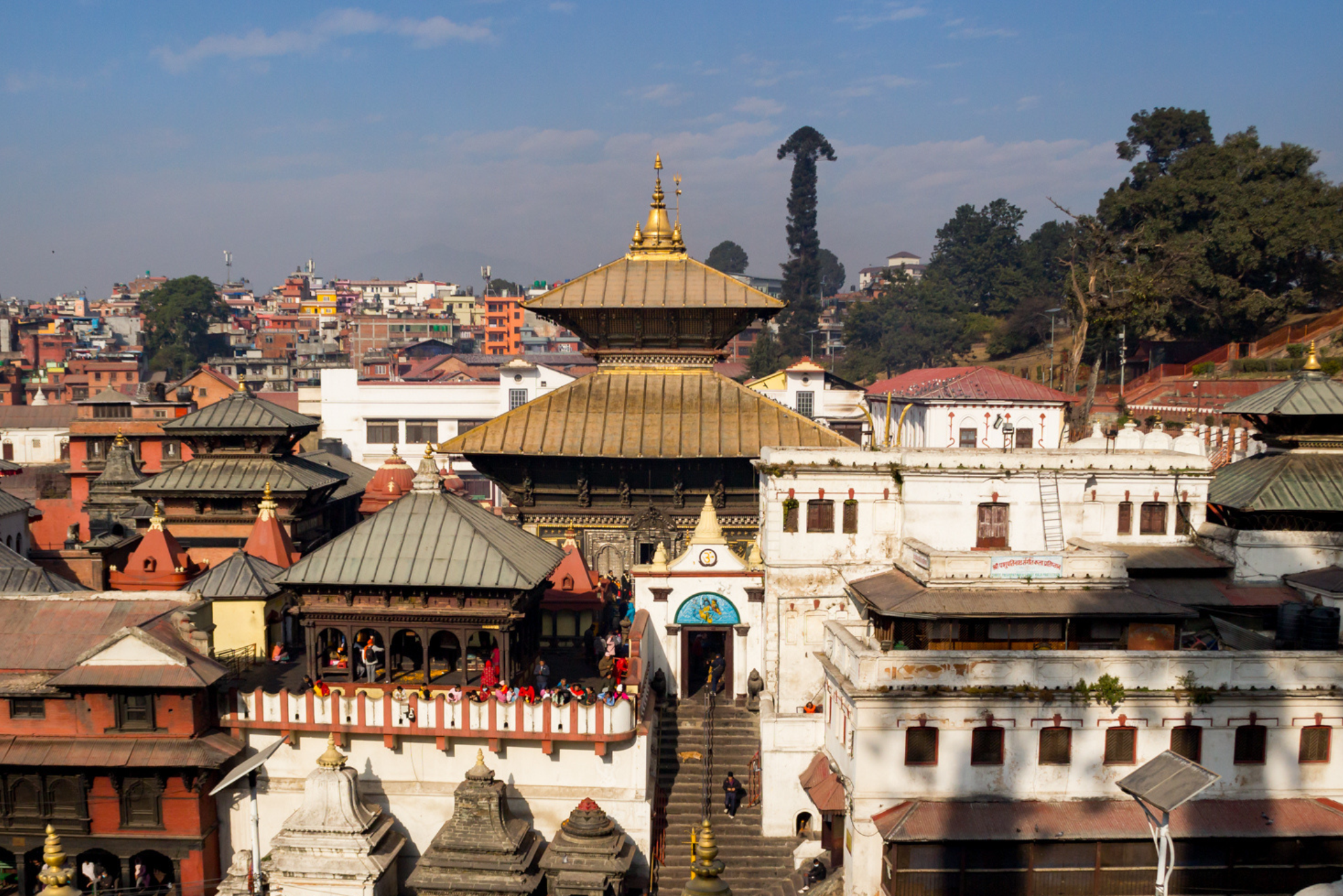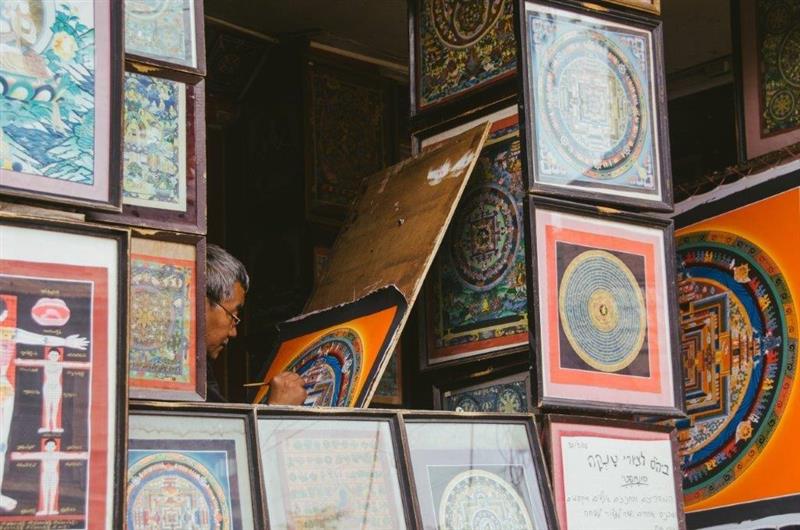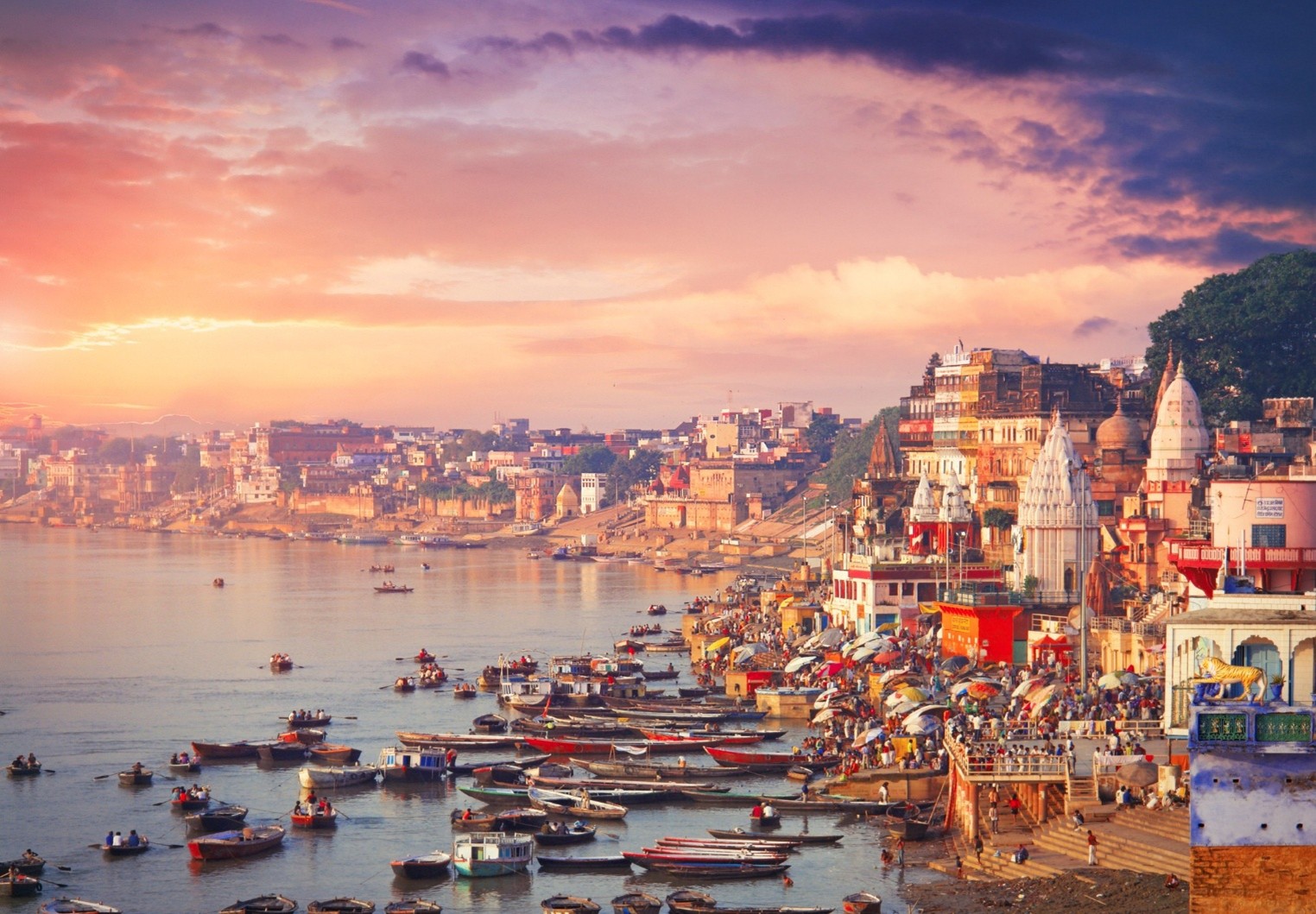The architectural marvels of the Himalayas tell stories of devotion, power, and artistic mastery. From Nepal to Bhutan and Tibet, these sacred structures—temples, palaces, and monasteries—stand as timeless symbols of spiritual and cultural heritage.
A young herder grazing his cattle near the lush banks of the Bagmati River notices something extraordinary: his cow, in an inexplicable trance, pouring milk onto a particular rock. Curiosity sets in, he investigates further and uncovers a sacred Shiva Lingam, a powerful symbol of Lord Shiva himself. This mystical discovery, deeply rooted in Hindu mythology, marks the genesis of one of the world’s most sacred sites: Nepal’s Pashupatinath Temple, now honored as a UNESCO World Heritage Site. Here, the divine presence of Lord Shiva came to be revered, and a temple would rise to celebrate his eternal essence.
Legend has it that this sacred ground was also chosen by Lord Shiva in another form—when he transformed into a deer to evade the gods, seeking sanctuary here and forever connecting himself to “The Lord of Animals.” Over centuries, the temple grew from these mythical foundations into an architectural marvel, lovingly expanded and adorned by generations of Nepal’s monarchs.
The temple’s earliest structure was constructed around 400 CE by Lichhavi King Supushpa Dev, establishing a five-story shrine in honor of Lord Shiva. Nearly 1,000 years later, around 1073 CE, King Shiva Dev II enhanced the temple with a copper roof, solidifying its prominence. The fourth Malla King, Ananta Malla, in 1372 CE, gilded the copper roof in gold, adding further splendor to the sacred site. King Ananta Malla also donated vast lands around the temple and built additional shrines and structures, transforming the area into a majestic spiritual complex.
Today, the temple’s awe-inspiring structure stands on a 23-meter-high platform, with intricately adorned gold and silver doors at each cardinal point, framed by detailed wooden carvings. Its two-tiered pagoda-style roof gleams with gold and silver, an architectural gem in a complex where every corner tells a story of devotion, legacy, and artistry. Pashupatinath Temple is more than a monument; it’s a living testament to Nepal’s cultural and spiritual heart, drawing pilgrims and admirers from around the world to experience the mysteries and wonders of Lord Shiva’s sanctuary.
Like Pashupatinath, Nepal is home to many other archaeological treasures that are deeply rooted in rich cultures and history. From the serene stupas of Boudhanath and Swayambhunath to the grand palaces and courtyards of Kathmandu, Bhaktapur, and Patan Durbar Squares, Nepal’s heritage sites reflect a vibrant tapestry of art, spirituality, and tradition. Each site, like Pashupatinath, offers visitors a glimpse into the profound legacy of ancient civilizations and the spiritual devotion that continues to thrive in this Himalayan nation. For those drawn to cultural exploration, Nepal’s archaeological marvels provide an unforgettable journey through time, history, and heritage.
Beyond Nepal, the Potala Palace in Tibet stands as another profound religious landmark, steeped in history and spiritual significance. Built in the 7th century by Tibetan King Songtsen Gampo as a meditation retreat, it marked the union of Tibet and China through his marriage to Princess Wencheng of the Chinese Tang Dynasty. Meanwhile, Pungthang Dewachen Phodrang, known as the Punakha Dzong, is Bhutan’s finest architectural example, translating to “the palace of great happiness or bliss.” According to legend, Guru Rinpoche foretold that a man named Namgyal would find a hill shaped like an elephant’s trunk, marking the site for a grand dzong. True to prophecy, in the 17th century, Zhabdrung Ngawang Namgyal, Bhutan’s unifier, chose this spot to build the fortress. Today, both the Potala Palace and Punakha Dzong among many others, stand as testaments to the region’s architectural brilliance and cultural heritage, enriching the spiritual landscape of the Himalayas.


















